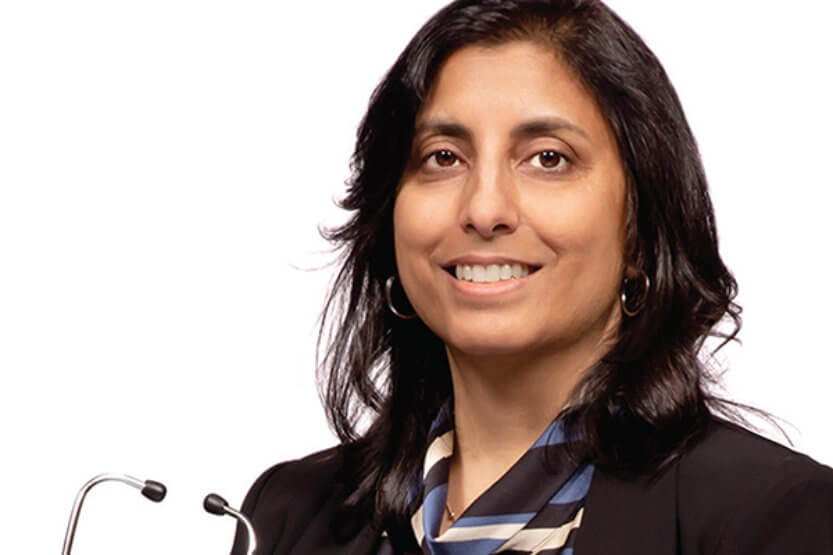In Class: Facilitator
 Medicine faculty member Jaya Yodh (Image by L. Brian Stauffer)
Medicine faculty member Jaya Yodh (Image by L. Brian Stauffer) I am one of four core medical education facilitators at U of I’s Carle Illinois College of Medicine. We come from different backgrounds—engineering, neuroscience, physiology, biochemistry. I’m the biochemist. We started with the College’s inaugural class of students last summer.
We work with the students in problem-based learning sessions. These sessions are the crux of the 18-month Phase 1 of our curriculum, which focuses on the basic sciences. The students begin in the summer with foundational work. At the end of August, they start the systems courses, which is where we, as facilitators, come in. Each of us is with a group of eight students for about 16 weeks, and then we rotate to another group.
The systems courses are based on organ systems such as circulatory and respiratory. The students learn about the system and then its pathologies.
Over the course of a week, the students are presented with a clinical case. When they come in Monday, they don’t know anything about it. The class may begin with a slide about a patient who has shortness of breath. The students have to generate a whole set of differentials for its cause. They have to work backwards to figure it out. It’s the same kind of thing that happens when you go into the doctor’s office. The facilitator guides them. It’s self-directed learning.
I’ve learned a great deal about the whole medical student experience and the value of integrating basic science and the clinical experience. At the same time, the College is integrating engineering, which is what makes it unique among medical schools. We want to train clinicians so that they can look at a clinical setting with an engineer’s mind and ask, “What are the areas of innovation here?”
An engineer on the faculty and I have developed an enzyme engineering lab. In one class, the students learned about informatics databases for enzymes and genes. They applied those tools to an enzyme called alteplase, which is used to stop blood clots. We asked them: “Can you identify an area for improvement? Can you design and market a new, modified version of this enzyme?” They worked in groups, and they came up with ideas. They determined who the end user would be and how they would benefit. They also determined who their client was—that is, who will pay for it.
It was a great way to get them excited about enzymes and about how basic science informs innovation. That’s what innovation is about—making something better. But you also can’t just innovate. You have to market your innovation. That’s what our students will be trained to do.
As a biochemist, I’ve studied how DNA is packaged in the cell and the enzymes that unwind DNA. At Illinois, I joined a lab in the physics department where they worked on DNA questions with fluorescence technology, which is really avant-garde. Biophysics is about merging disciplines. At Carle Illinois, we’re merging engineering with medicine. It’s a great challenge.
Condensed and edited from an interview conducted on Dec. 11, 2019


